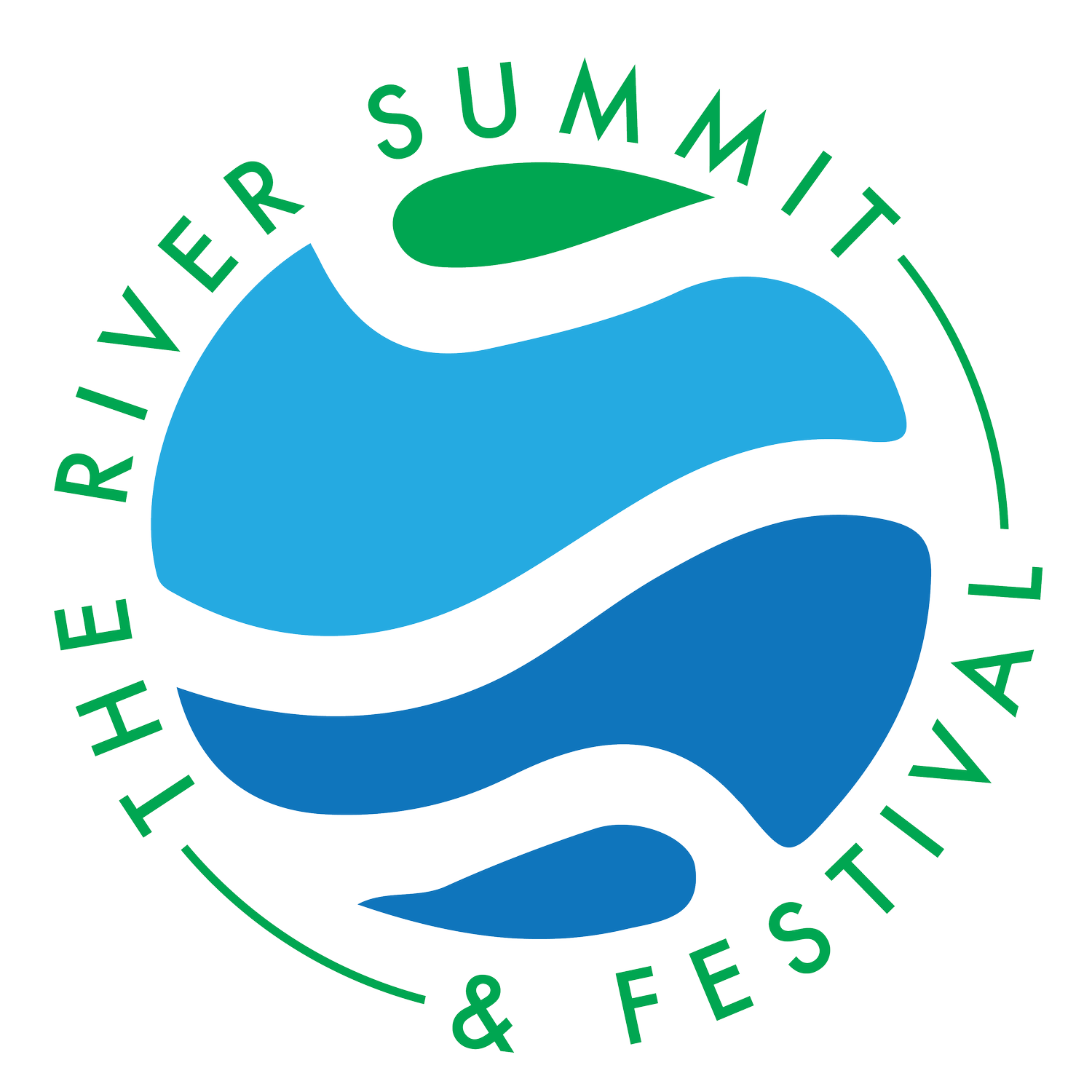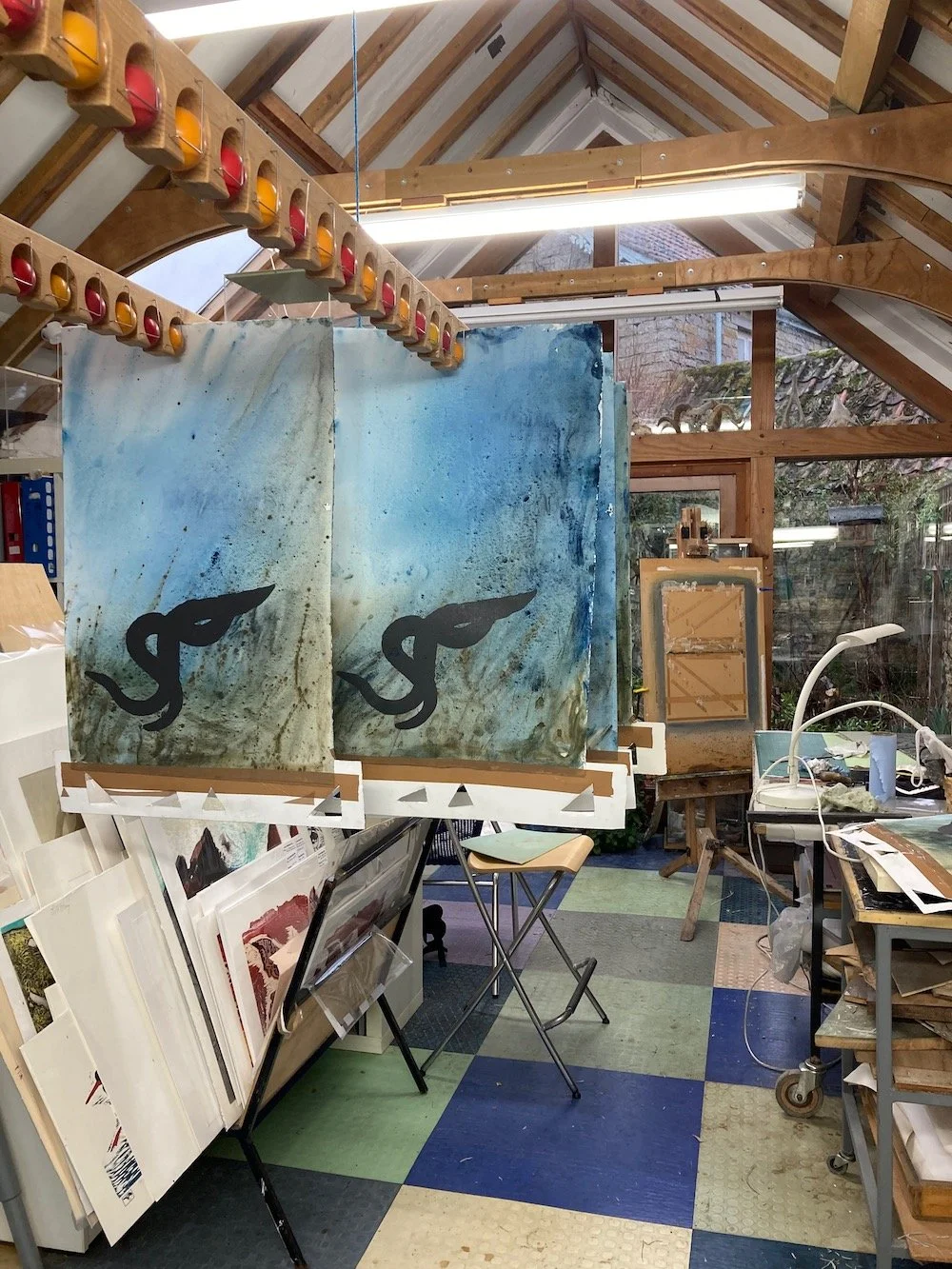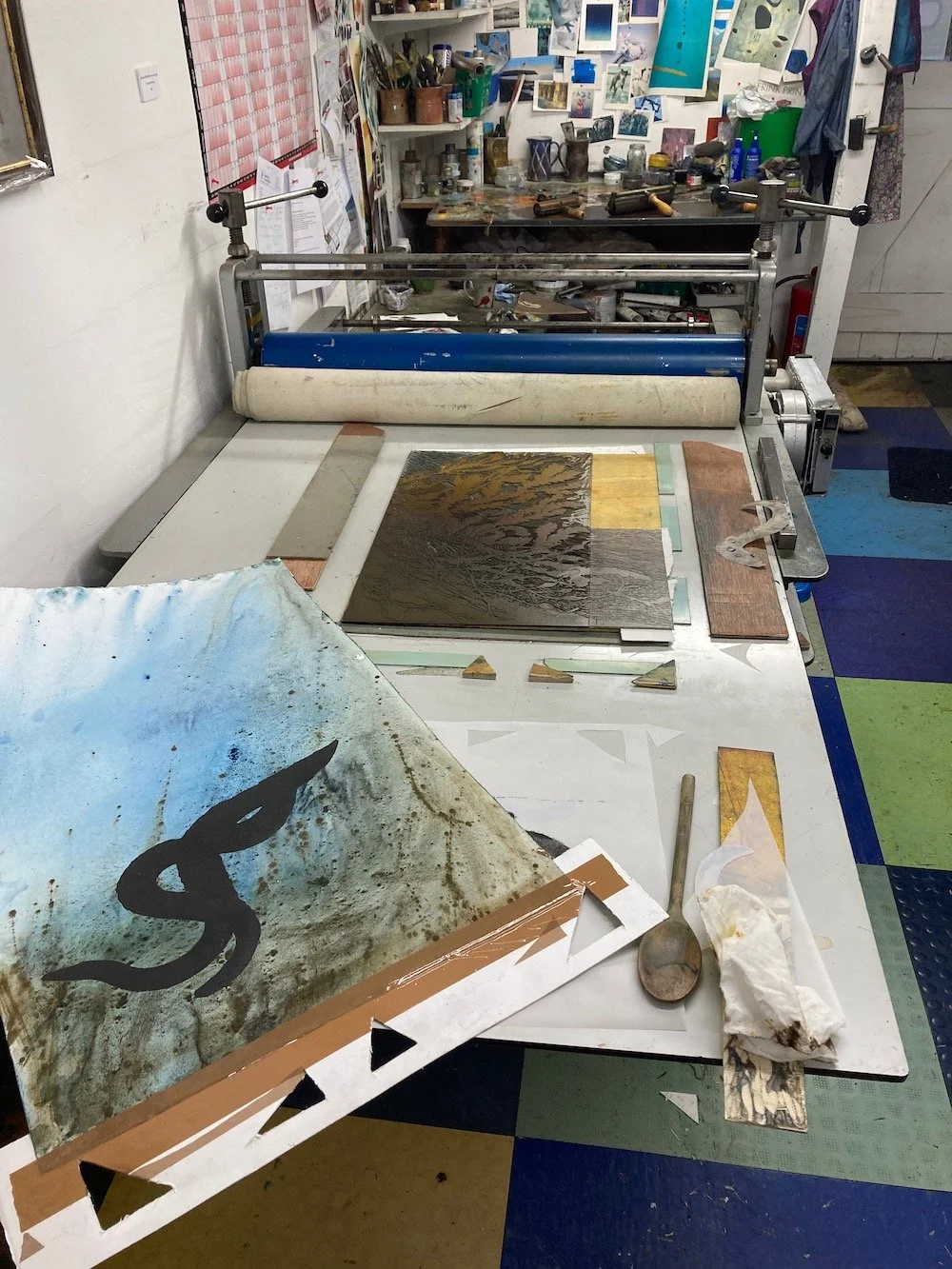The Decline of the Eels
Julia Manning is a well-renowned artist whose majestic relief prints celebrate the preciousness and strength of nature. Her fascination with animals began at an early age, and has developed throughout her life. In her prints, Julia aims to capture the spirit of the natural world that she maintains a close relationship with through regular drawing trips and coastal walks. She recently won the The Conservation Through Art Award at the Society of Wildlife Artists Annual exhibition at the Mall Galleries, London.
Julia’s work, specifically “The Decline of the Eels”, will be on display at The UK River Summit, and here, she explains what inspired her to create this powerful series…
“As a Somerset artist /printmaker I was invited to join nine other artists on a project entitled ‘Somerset’s Brilliant Coast’ partly funded by Somerset Wildlife Trust and Hinkley C Nuclear Power station. Learning about our coastline with a Marine Biologist, a Geologist and other experts to educate us has been a joyous learning experience.
I was wondering about what aspect I could cover when quite by chance Andy Don an International Eel expert came to buy another print from my studio for his collection. Over a coffee in my garden he said “You know, you should really do an eel print – they are such interesting animals and a great barometer for the wider environment.”
Having lived close to the River Parrett in the early 80s I knew a bit about eels and the elver fishing that went on, but I had no idea of the amazing story and history of this fish.
I had found my subject!
Andy is a Fellow of the Institute of Fisheries Management amongst other things, and a font of knowledge about fish, and his specialism, eels. He has been my mentor, feeding me the latest scientific information and the reasons why they have dramatically declined over the last forty years.
I read all I could about them and started to look with new vision at my local environment of the Somerset Levels, the rivers heading out into the estuary of Bridgwater Bay and the Bristol Channel.
I could not believe that the dramatic saga of eels was unfolding annually on my doorstep. I felt compelled to tell their story in print to make an audience aware of what we may be losing due to man-made structures, such as weirs and dams, pumping stations, hydropower plants, and large intakes like Hinkley Point power station! Then there is Climate Change – altering the way that the ocean currents operate, novel parasites, and the ubiquitous issue of plastics in our watercourses and oceans.
I have loved getting a bit political, doing something with a message which printmaking has often been used for in the past. Raising awareness of this important conservation issue has been, and continues to be, very rewarding. I hope my prints raise fundamental questions about man’s relationship with wildlife and the environment generally, not just the Critically Endangered eel.
Lockdown gave me the opportunity to explore wildly and to experiment with all the effects I could imagine, to create in print, my interpretation of the eel story happening in real time month by month in my local rivers and coastline. I walked with a sketch book, I tried to capture the colours of the environment, the time of year when they were migrating and the places through which they passed. Capturing the colour of the water of the different seas they passed through was essential to the narrative.
I used different wood and plywood for textures and printed from anything I could find which I could get a texture from. I experimented with stencils, lino in fact anything I could get through the press. I had such fun!
The more complex prints are editions of only 6 with the less complicated ones having editions of 20. The intention is to take these works and exhibit them across the UK to educate and raise awareness of the wider environmental story.”
Instagram: @juliamanningartist





